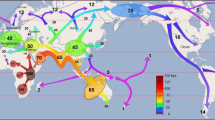Abstract
Children of subcontinental (Indian and Pakistani) origin living in the United Arab Emirates (UAE) have previously been shown to have a higher relative frequency of ALL when compared to other ethnic groups. To analyze the possible effect of social class in this difference, a study of socioeconomic factors was conducted through personal interviews with the families of 115 children with lymphoid malignancies. The patients belonged to three ethnic groups: (1) UAE; (2) other Arabs; and (3) Indian subcontinent. UAE parents had the highest income and number of rooms in their house, but the lowest level of education. Occupational categories were significantly different for the three ethnic groups. While 41% of the UAE fathers worked in the army or the police, the majority of Arab and subcontinental fathers worked as government adminstrators or professionals. UAE families had the highest number of children in the family, subcontinental families the lowest. The number of children per family was inversely related to the parents’ education level. Multiple regression analysis showed parental education level and house size to be significantly associated with ethnicity, while parental consanguinity was significantly associated with the diagnosis of lymphoma. It is difficult to define social class in the UAE population. While income and property ownership would place the UAE nationals in the highest category and the subcontinental group in the lowest, education level and occupational category would place the Arab and subcontinental groups higher. The smaller family size and higher education level in subcontinental families corresponds to the previously found higher relative frequency of ALL in this ethnic group and could lend support to the possible infectious etiology of the disease.
This is a preview of subscription content, access via your institution
Access options
Subscribe to this journal
Receive 12 print issues and online access
$259.00 per year
only $21.58 per issue
Buy this article
- Purchase on Springer Link
- Instant access to full article PDF
Prices may be subject to local taxes which are calculated during checkout
Similar content being viewed by others
Author information
Authors and Affiliations
Rights and permissions
About this article
Cite this article
Révész, T., Mpofu, C., Oyejide, C. et al. Socioeconomic factors in the families of children with lymphoid malignancy in the UAE. Leukemia 11, 588–593 (1997). https://doi.org/10.1038/sj.leu.2400601
Received:
Accepted:
Issue Date:
DOI: https://doi.org/10.1038/sj.leu.2400601


